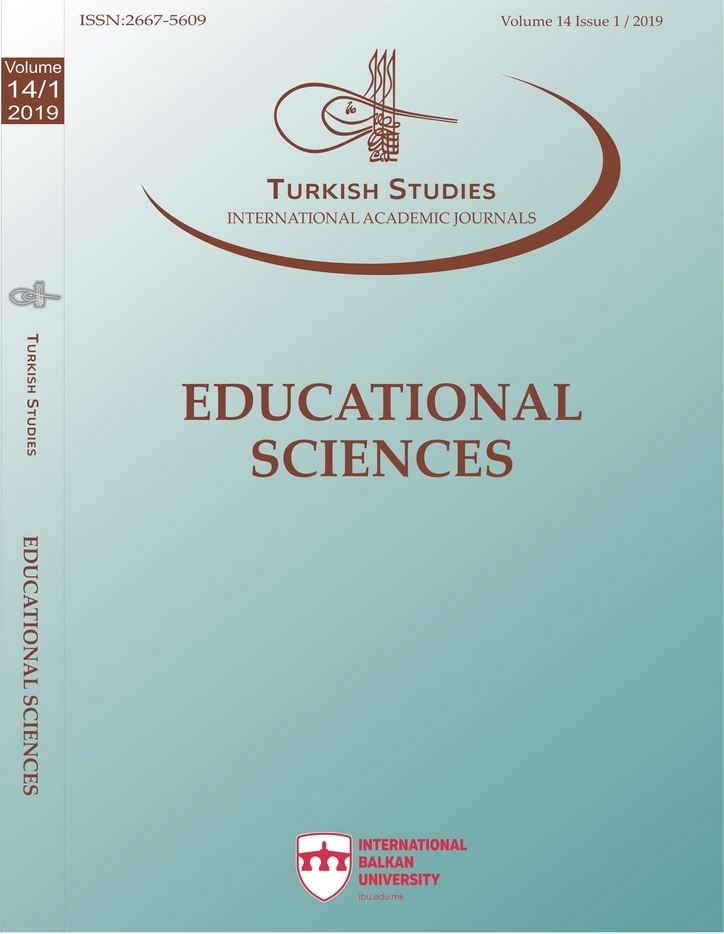ZİHİN HARİTALARININ MATEMATİK DERSLERİNDE KULLANIMINA İLİŞKİN SINIF ÖĞRETMENLERİNİN GÖRÜŞLERİ
OPINIONS OF CLASS TEACHERS ON USE OF MIND MAPS IN MATHEMATICS COURSES
___
- Aktaş, Ö. (2012). İlköğretimde kavram ve zihin haritaları ile desteklenmiş fen ve teknoloji eğitiminin öğrenme ürünleri üzerindeki etkileri. (Yayımlanmamış doktora tezi). Dokuz Eylül Üniversitesi Eğitim Bilimleri Enstitüsü, İzmir.
- Aydın, G. (2010). Zihin haritalama tekniğinin dinleneni anlamaya ve kalıcılığa etkisi. Atatürk Üniversitesi Sosyal Bilimler Enstitüsü Dergisi, 14(2), 1-16.
- Balım, A. G., Evrekli, E., ve Aydın, G. (2007). Fen ve Teknoloji Öğretiminde Zihin HaritalamaTekniği ve Mind Manager Programı Uygulamaları. Famagusta, Turkish Republic of Northern Cyprus: VI.International Educational Technologies Conference. (3-4-5. Mayıs 2007).
- Biktimirov, E. N., & Nilson, L. B. (2006). Show Them the money: Using mind mapping in the introductory finance course. Journal of Financial Education, 32(Fall), 72–86
- Boley, D. A. (2008). Use of premade mind maps to enhance simulation learning. Nurse Educator, 33(5), 220-223.
- Brinkmann, A. (2003). Graphical knowledge display–mind mapping and concept mapping as efficient tools in mathematics education. Mathematics Education Review, 16(4), 35-48.
- Buzan, T.,& Buzan, B. (2016). Zihin haritaları (5. Baskı). İstanbul: Alfa Yayınları.
- Bütüner, S. (2006). Bir anlamlı öğrenme aracı olan zihin haritalarına yönelik öğrencilerin görüşleri ve tutumları. Sakarya Üniversitesi Eğitim Fakültesi Dergisi, 0 (11). Retrieved from http://dergipark.gov.tr/sakaefd/issue/11227/134045.
- Bütüner, S. Ö., & Gür, H. (2008). Açılar ve üçgenler konusunun anlamlı öğrenme araçlarından ve diyagramları ve zihin haritaları kullanılarak öğretimi. Necatibey Eğitim Fakültesi Elektronik Fen ve Matematik Eğitimi Dergisi, 2(1), 1-18.
- Davies, M. (2011). Concept mapping, mind mapping and argument mapping: what are the differences and do they matter?. Higher education, 62(3), 279-301.
- Evrekli, E., İnel, D. ve Balım, A. G. (2012). Kavram ve zihin haritası kullanımının öğrencilerin kavramları anlama düzeyleri ile fen ve teknolojiye yönelik tutumları üzerindeki etkileri. Abant İzzet Baysal Üniversitesi Eğitim Fakültesi Dergisi, 12(1), 229-250.
- Fun, C. S., & Maskat, N. (2010). Teacher-centered mind mapping vs student-centered mind mapping in the teaching of accounting at pre-u level-an action research. Procedia-Social and Behavioral Sciences, 7, 240-246.
- Gür, H. ve Bütüner, S.Ö. (2006). Matematik derslerinde kullanılan zihin haritalama tekniğine yönelik bir tutum ölçeğinin geliştirilmesi. İlköğretim Online, 5(2), 61–74.
- Kahveci, G. (2004). Az görenlerde zihin haritası yöntemi ile özet çıkarmanın okuduğunu anlamaya etkisi. (Yayımlanmamış yüksek lisans tezi). Gazi Üniversitesi, Eğitim Bilimleri Enstitüsü, Ankara.
- Metin, M. (2014). Kuramdan uygulamaya eğitimde bilimsel araştırma yöntemleri. Ankara: Pegem Akademi Yayınlar
- Patton, M. Q. (2014). Nitel araştırma ve değerlendirme yöntemleri. (M. Bütün ve S. B. Demir, Çev.) Ankara: Pegem Akademi.
- Saban, A., 2005. Çoklu zeka teorisi ve eğitim. Ankara: Nobel Yayınları.
- Shih, P. C., Nguyen, D. H., Hirano, S. H., Redmiles, D. F., & Hayes, G. R. (2009, May). GroupMind: supporting idea generation through a collaborative mind-mapping tool. In Proceedings of the ACM 2009 international conference on Supporting group work (pp. 139-148). ACM.
- Şeyihoğlu, A., ve Kartal, A. (2010). Yapılandırmacı yaklaşım temelli ilköğretim hayat bilgisi ve sosyal bilgiler derslerinde zihin haritalama tekniğine ilişkin öğretmen görüşleri. Kuram ve Uygulamada Eğitim Bilimleri Dergisi, 10(3), 1613-1656.
- Tuna, F. (2013). Coğrafya öğretiminde kavram haritalarının öğrencilerin başarısına etkisi ve öğrencilerin yöntem hakkındaki görüşleri. Mehmet Akif Ersoy Üniversitesi Eğitim Fakültesi Dergisi, 13(25), 182 – 197.
- Yaşar, I. Z. (2006). Fen Eğitiminde Zihin Haritalama Tekniğiyle Not Tutmanın Kavram Öğrenmeye Ve Başarıya Etkisi. (Yayınlanmamış yüksek lisans tezi). Marmara Üniversitesi, Eğitim Bilimleri Enstitüsü, İstanbul.
- Yetkiner, A. (2011). İlköğretimde İngilizce öğretiminde zihin haritası kullanımının öğrencilerin akademik başarılarına, tutumlarına ve kalıcılığa etkisi. (Yayımlanmamış yüksek lisans tezi). Fırat Üniversitesi, Eğitim Bilimleri Enstitüsü, Elazığ.
- Yıldırım, A., & Şimşek, H. (2008). Sosyal bilimlerde nitel araştırma yöntemleri (6. Baskı). Ankara: Seçkin Yayıncılık.
- ISSN: 2667-5609
- Yayın Aralığı: Yılda 6 Sayı
- Başlangıç: 2006
- Yayıncı: ASOS Eğitim Bilişim Danışmanlık Otomasyon Yayıncılık Reklam Sanayi ve Ticaret LTD ŞTİ
İŞBİRLİĞİNE DAYALI ÖĞRENME YÖNTEMİ: TÜM TEKNİKLERİ KAPSAYICI BİR DERLEME ÇALIŞMASI
OKUL ÖNCESİ EĞİTİMİ ÖĞRETMEN ADAYLARININ MESLEKİ MOTİVASYONLARI
Deniz EKİNCİ VURAL, Zübeyde DOĞAN ALTUN
7. SINIF TÜRKÇE DERS KİTABINDA YER ALAN KONUŞMA ETKİNLİKLERİNİN ANALİZİ
KONUŞMA KAZANIMLARI AÇISINDAN ORTAOKUL TÜRKÇE DERS KİTAPLARI
Kemalettin DENİZ, Efecan KARAGÖL, Rasim TARAKCI
HOW DIFFERENT TYPES OF INFERENCING PROVIDE COHERENCE IN NARRATIVE TEXTS
Ozan Deniz YALÇINKAYA, Aygun HASANOVA
EĞİTİM SENDİKALARI RAPORLARINA GÖRE ÖĞRETİM PROGRAMLARININ DEĞERLENDİRİLMESİ
ORİGAMİ ÇALIŞMALARININ BİREY VE TOPLUM AÇISINDAN ÖNEMİNE İLİŞKİN ÜNİVERSİTE ÖĞRENCİLERİNİN GÖRÜŞLERİ
COĞRAFYA EĞİTİMİNDE MATERYAL KULLANIMINA COĞRAFYA ÖĞRETMENLERİNİN BAKIŞ AÇISI
